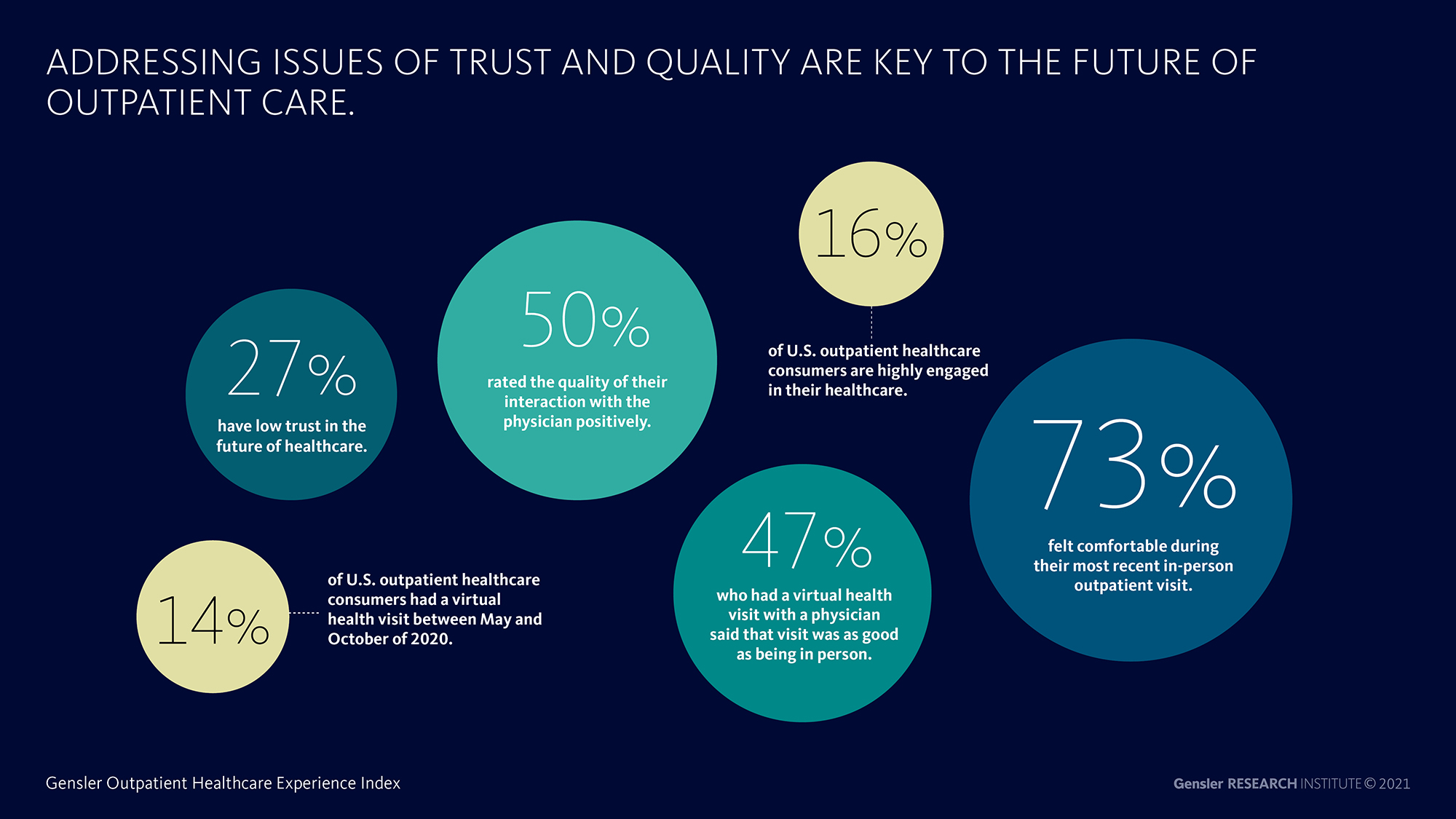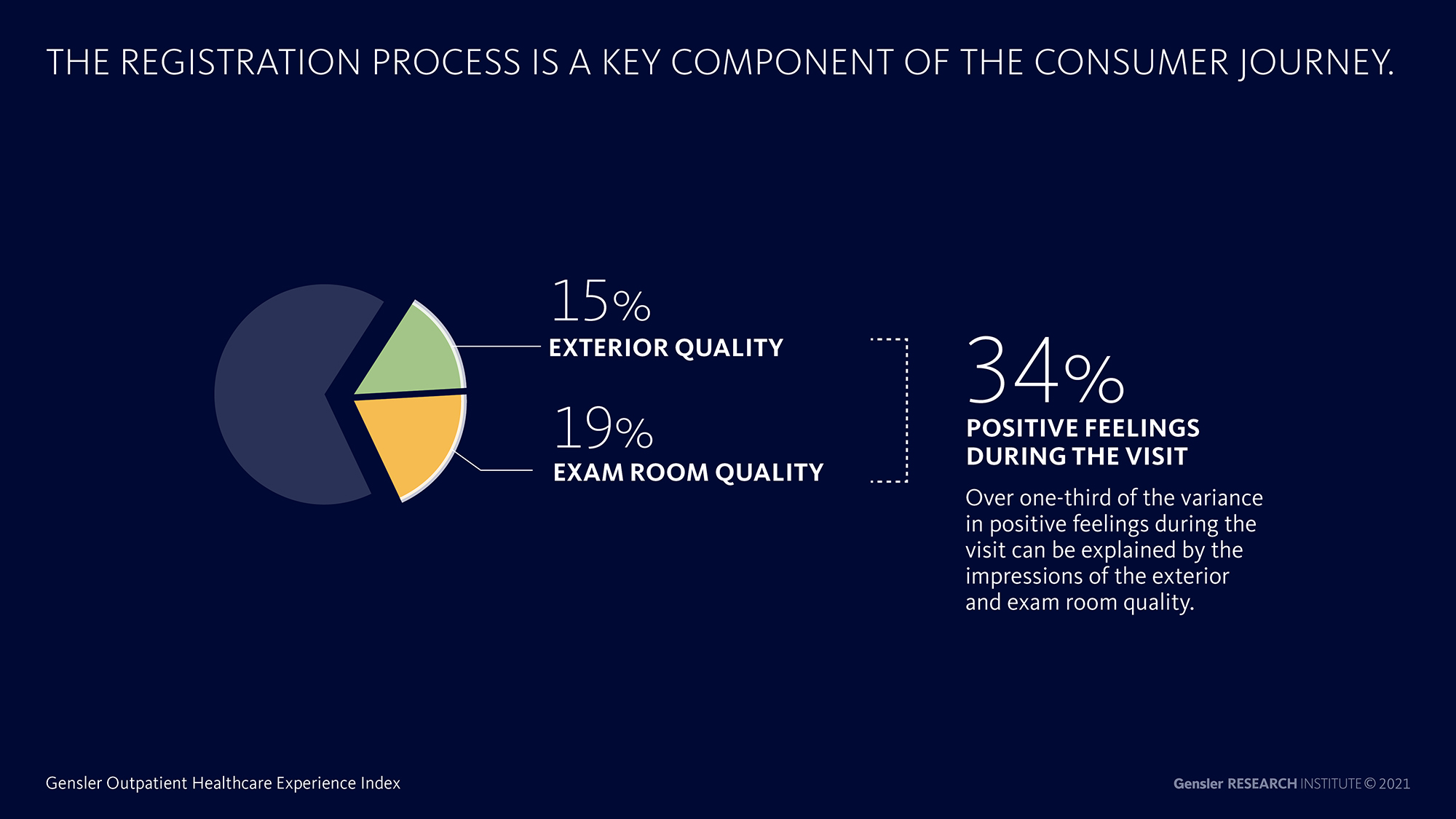To inform the future of outpatient healthcare, including fostering consumer trust, we conducted a survey of 3,500 people who made recent outpatient visits to a healthcare setting. We surveyed the people during the COVID-19 pandemic, recognizing the heavy burden it added to patients' concerns about their healthcare. But we also realize that the pressures on today’s healthcare system existed well before the recent pandemic. To that effect, our research seeks to go beyond the pandemic by framing key outcomes of the consumer experience — engagement, loyalty, and resilience — around the outpatient journey, now and in the future.

U.S. outpatient healthcare consumers have a complicated relationship with their care.
While 73% of survey respondents felt comfortable during their most recent in-person visit, only 16% reported being highly engaged in their healthcare. These findings from Gensler’s Outpatient Healthcare Experience Index reinforce that providers are tasked with aligning new modes of outpatient care with the evolving expectations of consumers.

Optimize the arrival experience for outpatients.
The outpatient consumer may spend a substantial amount of time in a healthcare setting before their consultation. The arrival experience includes the first impression of a healthcare facility’s exterior, the check-in and registration processes, the waiting room atmosphere, and the experience of the exam room before the physician arrives.

Design is integral to a great patient experience — particularly the exam room layout.
The configuration of monitors and screens improves the outpatient’s access to health information and encourages shared decision-making related to care. Furthermore, a clear delineation between exam and consult areas gives the visitor a stronger sense of control over their experience and interactions with the physician, according to survey respondents.
It is also important that both physicians and physical exam rooms be adaptable to individual behaviors in order to promote a better overall experience. Notably, handheld digital technologies used to actively facilitate consultations with the physician helped improve the consumers' resilience and coping following their in-person visits.

We’ve created a framework for the outpatient experience.
We’ve framed the outpatient experience by outlining the actions providers can take to drive key outcomes post-consult with patients. The clinical environment amplifies interactions and services along the outpatient journey and while the outpatient experience is evolving, positive actions can build toward key outcomes — including resilience, loyalty, and engagement. Loyalty is measured by the person’s likelihood of coming back or recommending the location. A positive retroactive lens also contributes to a high loyalty outcome, or looking back at the overall visit with optimism and happiness.
Outpatient Healthcare Experience Index Methodology
This survey of 3,500 outpatient consumers was conducted online via an anonymous, panel-based survey from May 15 to October 14, 2020. Respondents were required to have visited an outpatient setting within the year prior to the survey.
Download the full Outpatient Experience Index Report to explore insights on the evolving state of consumer expectations, informed by responses from 3,500 people with a recent outpatient visit.